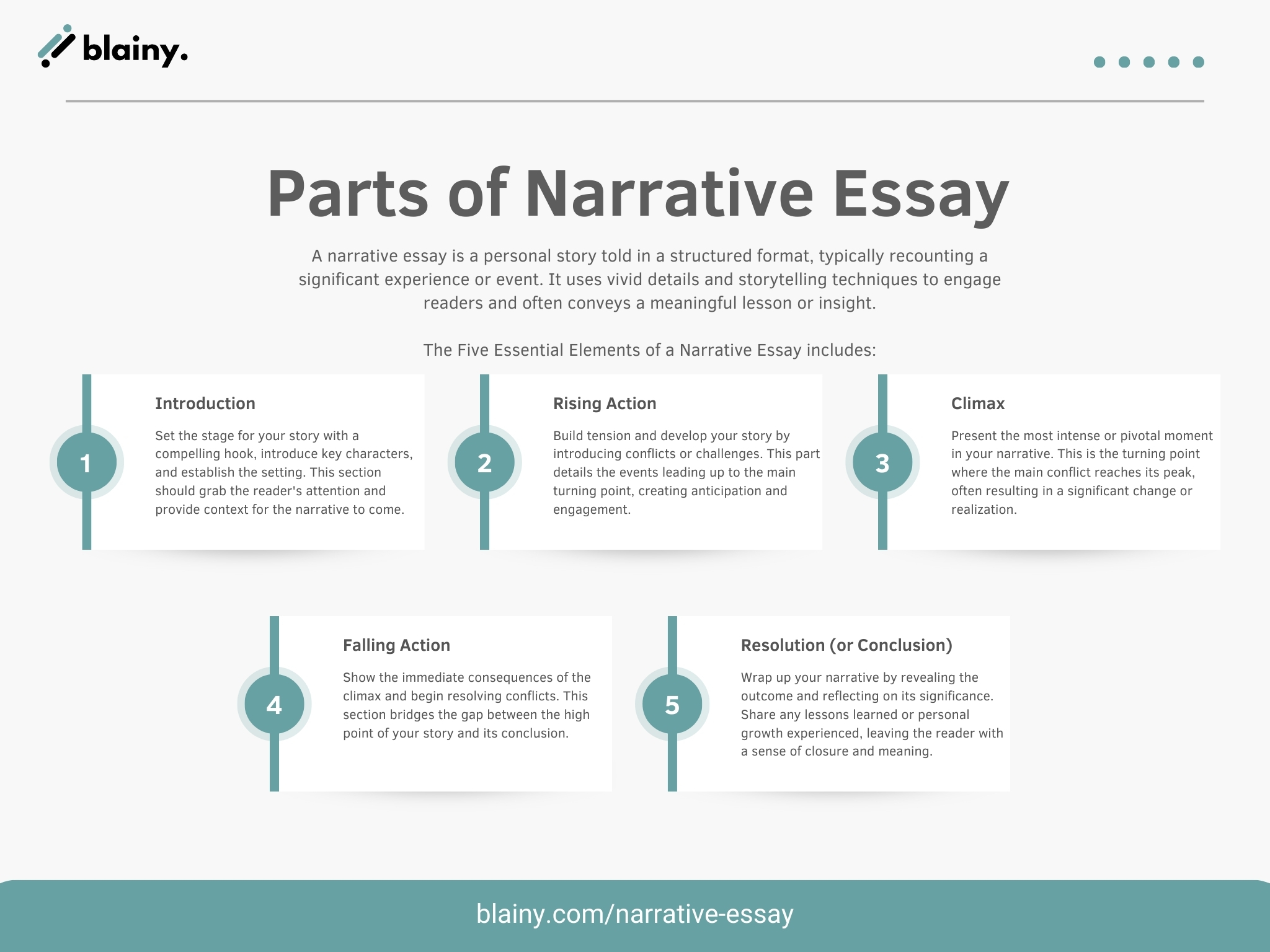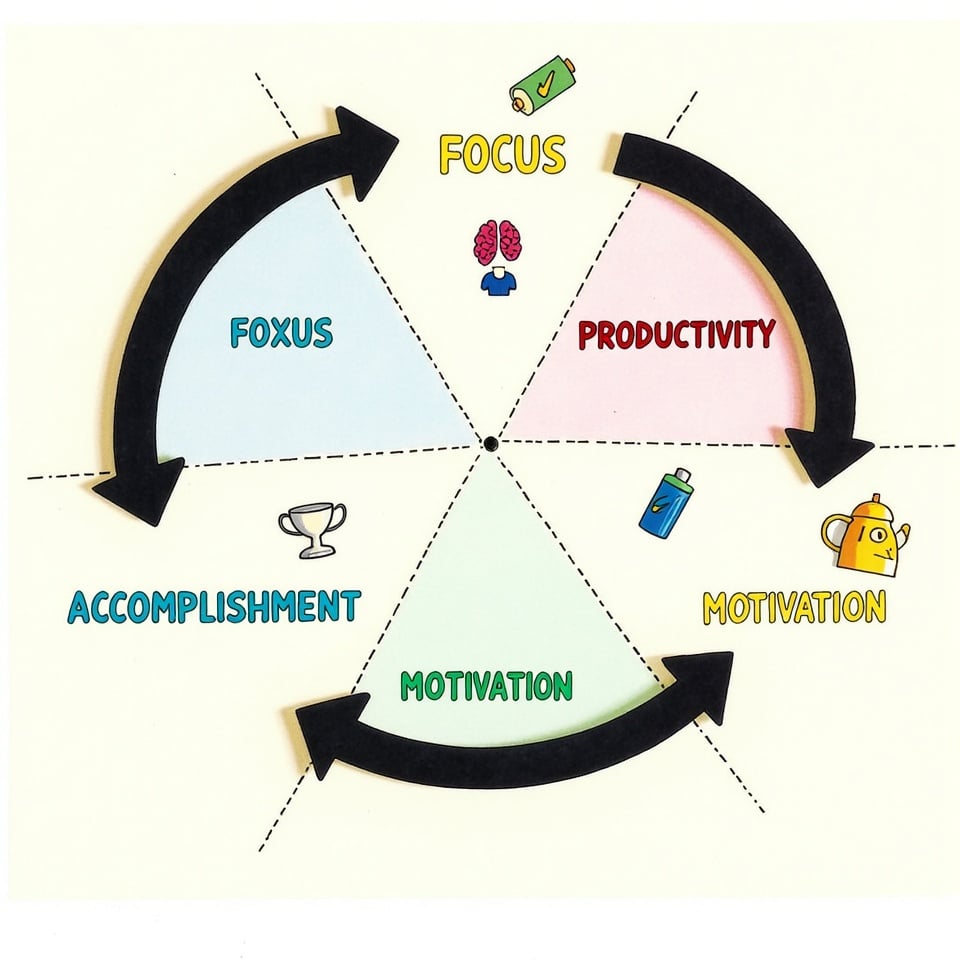A narrative essay offers a unique opportunity to share a personal story without the commitment of writing a full-length book. Unlike more structured academic essays, narrative essays embrace a looser format and more creative expression.
They don’t require extensive research or citations, focusing instead on the art of storytelling. The core purpose of a narrative essay is simple yet powerful: to recount a meaningful experience or event in a way that engages readers and often imparts a lesson or insight.
This form of writing allows you to explore your voice, reflect on significant moments, and connect with your audience through the universal appeal of a well-told story.
Table of Contents
What is a narrative essay?
A narrative essay is a form of creative non-fiction writing that tells a story from a specific point of view, typically the author’s.
It recounts a personal experience or event in a way that engages the reader and often conveys a meaningful message or insight.
Unlike more formal academic essays, narrative essays allow for a more personal and expressive writing style, incorporating elements of storytelling such as characters, plot, setting, and dialogue.
In essence, a narrative essay:
- Relates a sequence of events
- Usually follows a chronological structure
- Includes vivid details and sensory descriptions
- Often has a central theme or purpose
- Allows for personal reflection and analysis
- Aims to evoke an emotional response from the reader
Parts of narrative essay
A well-structured narrative essay typically consists of five key parts, each serving a specific purpose in telling the story:

1. Introduction
The introduction sets the stage for your story. It should grab the reader’s attention with a compelling opening, often called a “hook.” This part also introduces the main characters, and setting, and gives a hint of the central conflict or theme. The introduction usually ends with a thesis statement that provides a glimpse of the story’s significance.
2. Rising Action
This section develops the story, building tension and introducing conflicts. It’s where you provide background information, describe events leading up to the main conflict, and deepen character development. The rising action should engage readers and make them eager to know what happens next.
3. Climax
The climax is the turning point or the most intense moment in your story. It’s where the main conflict comes to a head, and the protagonist faces their greatest challenge. This part often represents a crucial decision, realization, or action that changes the course of the narrative.
4. Falling Action
After the climax, the falling action shows the immediate consequences of the climax and begins to resolve conflicts. This part bridges the gap between the high point of your story and its conclusion, tying up loose ends and showing how characters react to the climax’s events.
5. Resolution (or Conclusion)
The resolution wraps up the story and provides closure. It often reflects on the story’s significance or the lessons learned. A good conclusion doesn’t just end the story but leaves the reader with something to think about, connecting the narrative to broader themes or personal growth.
Where to use a narrative essay?
Narrative essays are versatile and can be used in various academic and professional contexts. Here are some common situations where narrative essays are particularly effective:
Academic Settings:
- English and Literature classes: To analyze personal experiences or explore creative writing techniques
- College application essays: To showcase an applicant’s personality and experiences
- History courses: To recount historical events from a first-person perspective
- Psychology classes: To reflect on personal growth or behavioral changes
Professional Environments:
- Journalism: To create engaging feature stories or personal interest pieces
- Memoirs and autobiographies: To share life experiences with a wider audience
- Business presentations: To illustrate concepts through relatable anecdotes
- Motivational speaking: To inspire audiences with personal stories of overcoming challenges
Personal Development:
- Therapy or counseling: As a tool for self-reflection and processing experiences
- Personal blogs: To connect with readers through shared experiences
- Travel writing: To vividly describe journeys and cultural encounters
Social and Community Contexts:
- Advocacy: To raise awareness about social issues through personal stories
- Community newsletters: To highlight local events or individuals
- Cultural preservation: To pass down family histories or cultural traditions
Digital Media:
- Social media posts: To engage followers with personal anecdotes
- Podcasts: To create compelling episodic content
- YouTube videos: To structure video essays or vlogs
5 steps to writing a narrative essay
Here are 5 steps to write a narrative essay. Following these steps will help you craft a compelling personal story that engages your readers and effectively conveys your experience or message.
Choosing a topic (or prompt given)
The first step in writing a narrative essay is selecting a compelling topic or responding to a given prompt. If you have the freedom to choose, reflect on personal experiences that have significantly impacted you or taught you valuable lessons. Consider moments of triumph, challenge, or transformation that could resonate with readers. If responding to a prompt, carefully analyze its requirements and brainstorm relevant experiences that align with the given theme. Remember, the most effective narrative essays often stem from seemingly ordinary events that carry deeper meaning or insight.
Making an outline
Once you’ve settled on your topic, create a basic outline to structure your narrative. Start by identifying the key events or moments that will form the backbone of your story. Arrange these in chronological order or in a sequence that best serves your narrative arc. Include brief notes about the setting, important characters, and any dialogue you plan to incorporate. Also, consider the central theme or message you want to convey and how each part of your story contributes to this. A well-crafted outline serves as a roadmap, ensuring your narrative remains focused and coherent throughout the writing process.
Writing your narrative essay
With your outline as a guide, begin drafting your narrative essay. Start with a strong opening that hooks the reader and introduces the story’s context. As you write, focus on bringing your experience to life through vivid descriptions and sensory details. Show rather than tell, allowing readers to immerse themselves in your story. Incorporate dialogue where appropriate to add authenticity and depth to your characters. Maintain a consistent point of view throughout, typically first-person for personal narratives. As you approach the conclusion, reflect on the significance of the experience and what you learned from it, tying back to your central theme or message.
Revise your essay
After completing your first draft, step away from your essay for a short while. This break allows you to return with fresh eyes, making it easier to spot areas for improvement. During revision, focus on the overall structure and flow of your narrative. Ensure that each paragraph transitions smoothly to the next and that your story maintains a clear and logical progression. Check that your opening effectively engages the reader and that your conclusion provides a satisfying resolution or reflection. Look for opportunities to enhance your descriptions, strengthen your dialogue, or deepen your insights. Consider whether your essay effectively conveys the intended message or theme and make adjustments as needed.
Proofread, edit, and publish your narrative essay
In the final stage, carefully proofread your essay for any grammatical errors, spelling mistakes, or punctuation issues. Read your essay aloud to catch awkward phrasing or rhythm problems. Consider asking a peer or mentor to review your work, as they may spot issues you’ve overlooked. Make any necessary edits to polish your writing and ensure clarity. Pay attention to word choice, replacing weak or repetitive language with more impactful alternatives. Once you’re satisfied that your essay is the best it can be, prepare it for submission or publication according to the required format. Remember, a well-crafted narrative essay has the power to engage, move, and inspire readers, so take pride in sharing your unique story and perspective.
Narrative essay vs. descriptive essay
Narrative essays and descriptive essays are both forms of creative writing that employ vivid language, but they serve different purposes and have distinct characteristics. A narrative essay tells a story, typically from the writer’s personal experience, with a clear plot containing a beginning, middle, and end. Its primary goal is to engage the reader in a sequence of events that lead to a central point or insight. Narrative essays often include characters, dialogue, and a conflict or challenge to overcome, written in the first-person point of view to involve the reader emotionally in the story’s progression.
Whereas, a descriptive essay focuses on painting a detailed picture of a person, place, object, or event using sensory details. The main objective is to create a vivid image in the reader’s mind, appealing to their senses of sight, sound, smell, taste, and touch. Unlike narrative essays, descriptive essays don’t necessarily follow a chronological sequence or tell a complete story. They may be written in the first or third person and aim to immerse the reader in the described scene or subject. While both essay types use descriptive language, narrative essays use it to support the story’s progression, whereas in descriptive essays, vivid description is the primary focus.
Narrative essay topic ideas
Narrative essay topics can range from personal experiences to imaginative scenarios. Here are some engaging ideas that can inspire students to craft compelling stories:
- A life-changing encounter with a stranger
- The day you overcame your greatest fear
- An unexpected act of kindness that altered your perspective
- A moment when you stood up for what you believed in
- The most challenging decision you’ve ever had to make
- A time when you learned an important lesson from failure
- An experience that made you see your family in a new light
- The day you realized your passion or calling in life
- A journey that transformed your understanding of a different culture
- A childhood memory that still influences you today
Example of a narrative essay
Here’s an example of a short narrative essay based on the topic “A life-changing encounter with a stranger”:
The bustling city street faded into background noise as I locked eyes with the old man. His weathered face and tattered clothes spoke of a hard life, but his eyes sparkled with an intensity that drew me in. I had rushed past him countless times before, always too busy to notice. But today, something made me pause.
“Got a minute for an old timer?” he asked, his voice rough but kind. Against my usual instincts, I nodded and sat beside him on the park bench. What followed was a conversation that would alter the course of my life. The man, John, shared stories of his youth as a civil rights activist in the 1960s. He spoke of courage in the face of hatred, of hope when all seemed lost, and of the power of individual actions to spark change.
As John talked, I felt a shift within me. My own problems—a stressful job, relationship woes—suddenly seemed trivial. Here was a man who had faced real adversity, who had put his life on the line for what he believed in. Yet he spoke without bitterness, his words filled with wisdom and compassion.
“You know,” John said, fixing me with those piercing eyes, “the world changes one person at a time. Never underestimate the impact you can have.” His words struck a chord deep within me. I realized how complacent I had become, how I had allowed my life to shrink into a narrow focus on my own concerns.
That chance encounter lasted barely an hour, but its effects rippled through my life. Inspired by John’s stories, I began volunteering at a local community center. I rediscovered the passion for social justice that had driven me in college but had been buried under years of corporate ladder-climbing. Within months, I had changed careers, dedicating myself to nonprofit work.
Now, years later, whenever I pass that park bench, I think of John and the profound impact a stranger can have. His words continue to guide me: “The world changes one person at a time.” I strive to be that change, to touch others’ lives as John touched mine. And I never rush past a stranger without wondering what wisdom they might hold, what story they might tell that could change everything.
Final thoughts
Narrative essays offer a unique opportunity for writers to share their experiences, insights, and personal growth with readers. By crafting compelling stories that engage the senses and emotions, these essays can leave a lasting impact on both the writer and the audience.
As you embark on your own narrative writing journey, remember that the power of your essay lies not just in the events you describe, but in the authenticity of your voice and the universal truths you reveal.
Whether you’re recounting a life-changing encounter, a moment of triumph, or a painful lesson learned, your narrative has the potential to inspire, educate, and connect with others in profound ways.
Embrace the art of storytelling, and let your experiences shine through your words, creating a narrative that resonates long after the final sentence.
FAQs
What is a narrative essay?
A narrative essay is a form of creative writing that tells a story from a specific point of view, typically the author’s. It recounts a personal experience or event in a way that engages the reader and often conveys a meaningful message or insight. Unlike more formal academic essays, narrative essays allow for a more personal and creative approach, using vivid details, dialogue, and sensory language to bring the story to life.
How to start a narrative essay?
To start a narrative essay effectively:
- Begin with a hook: Open with an intriguing statement, question, or scene that immediately captures the reader’s attention.
- Set the scene: Quickly establish the setting, time, and context of your story.
- Introduce the main characters: If your story involves other people, briefly introduce them.
- Hint at the main conflict or purpose: Give readers a sense of what the story is about without revealing everything.
- Use a clear, engaging voice: Your opening should set the tone for the rest of the essay.
What are the 5 steps to a narrative essay?
- Prewriting: Choose your topic, brainstorm ideas, and outline your story.
- Drafting: Write your first draft, focusing on getting the story down without worrying too much about perfection.
- Revising: Review your draft, focusing on structure, content, and overall narrative flow.
- Editing: Fine-tune your language, checking for grammar, punctuation, and style issues.
- Publishing: Prepare your final draft and submit or share your essay.
What are the five parts of a narrative essay?
- Introduction: Sets the scene and introduces the main elements of the story.
- Rising Action: Develops the story, building tension and introducing conflicts.
- Climax: The turning point or most intense moment in the story.
- Falling Action: Shows the consequences of the climax and begins to resolve conflicts.
- Resolution (or Conclusion): Wraps up the story, often reflecting on its significance or the lessons learned.
What is the difference between a narrative essay and a descriptive essay?
Narrative and descriptive essays differ primarily in their purpose and structure. Narrative essays tell a story with a plot, characters, and often a lesson, unfolding chronologically. Descriptive essays, however, focus on creating a vivid, detailed portrayal of a subject without necessarily following a timeline or including a plot. While narratives guide readers through events, descriptive essays aim to immerse readers in sensory details, painting a picture with words rather than recounting a sequence of actions.







